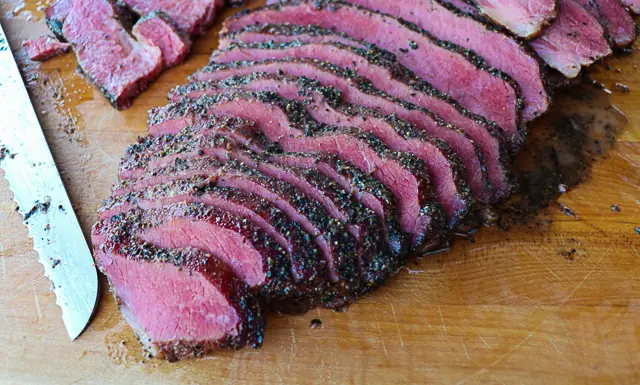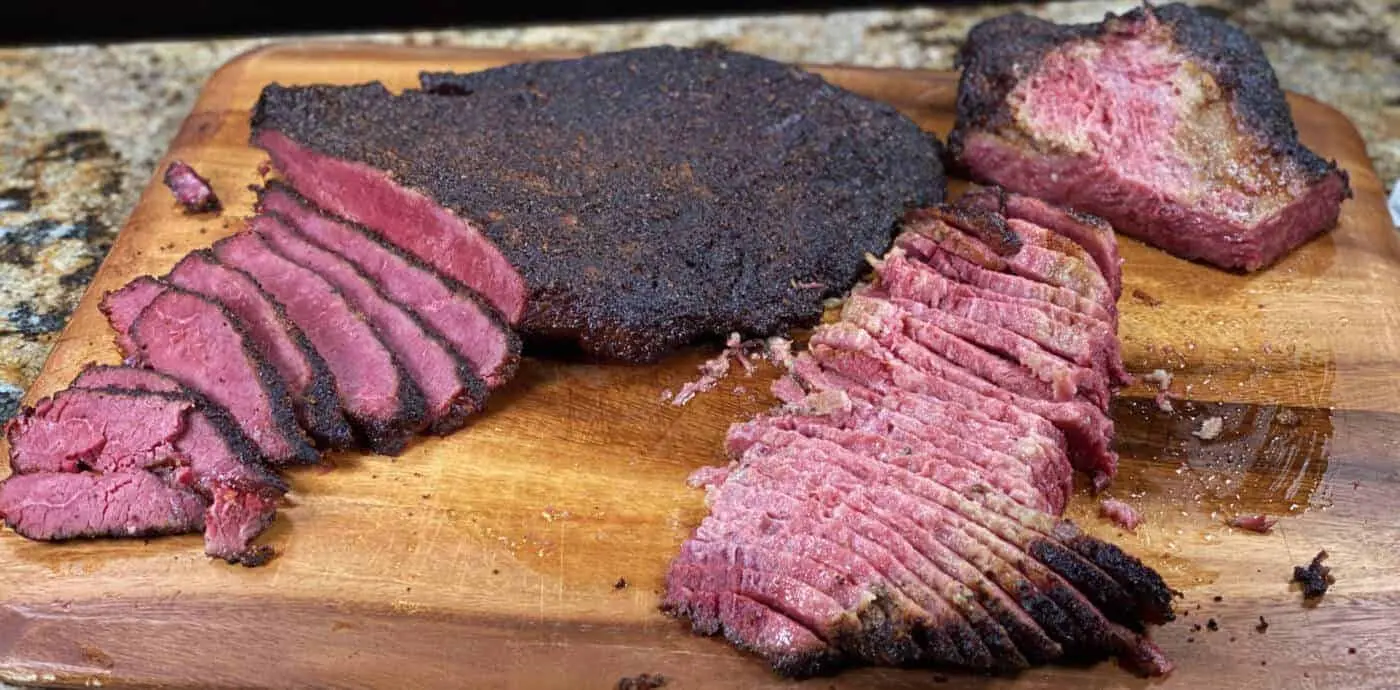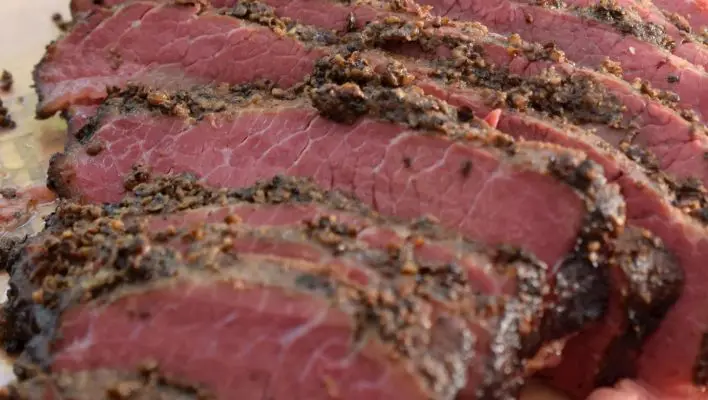If you're a fan of Jewish delicatessens, you've probably come across the mouthwatering dishes of pastrami and corned beef. While both are beef cuts, they are distinct in terms of their cooking methods, processing, and usage. In this article, we'll delve into the wonderful world of home smoked pastrami, its origins, and how it differs from corned beef.

What is Pastrami?
Pastrami is a popular meat preservation method that dates back to ancient times. It is believed to have originated from a Romanian jerky called basturma. This highly-seasoned smoked beef is typically made from a fine brisket, although it can also be made from turkey or lamb. Chefs often use specific cuts such as the deckle, a lean and firm shoulder cut, or the navel, a juicier section just below the ribs.
Once the meat is cut, it is dried and then rubbed with a mixture of traditional herbs and spices, including garlic, salt, black pepper, cloves, coriander, and mustard seeds. Finally, it is smoked and steamed to ensure long-term preservation. The result is a deliciously tender and flavorful meat that can be served in shredded or sliced pieces.
Although pastrami was originally popular in Romania, it has now become a sought-after dish in the United States, Canada, and Europe.
What is Corned Beef?
Corned beef originated in the Middle East and Europe as another method of meat preservation. Contrary to popular belief, it is not called corned beef because it contains corn. The term corned refers to the large corns of salt used in the brining process.

To make corned beef, the brisket of beef is boiled with a mixture of salt, sugar, herbs, and spices. The salt acts as a preservative, reducing the risk of botulism and keeping the meat safe to eat even after it's cooked. Once cooked, the meat is sliced and served.

The Key Differences Between Pastrami and Corned Beef
While both pastrami and corned beef require preparation time and start with large meat cuts, there are several key differences between the two dishes:
- Type of Cuts: Pastrami is typically made from cuts such as brisket from the beef plate, shoulder, or cow's naval area. Corned beef, on the other hand, uses brisket from the lower area of a cow's chest.
- Nutrition Count: Pastrami contains fewer calories and fats compared to corned beef. However, it has a higher sodium content due to the preservation process. Corned beef, on the other hand, contains more calories, fats, and sodium.
- Serving Styles: Corned beef is often served as a sandwich or as part of traditional Irish dishes. Pastrami is also commonly used in sandwiches, such as the Black Pastrami Reuben.
- Processing of Cuts: Pastrami is smoked and steamed after being cut and seasoned, while corned beef is boiled with salt.
Which is Healthier: Corned Beef or Pastrami?
In terms of nutritional elements like protein and fat content, both pastrami and corned beef are similar. However, pastrami is often considered healthier due to its lower sodium content compared to corned beef. It also tends to be more flavorful due to the additional spices and seasonings used.

Summing Up
Home smoked pastrami is a delicious Jewish delicacy that has gained popularity around the world. Its unique combination of smoking, steaming, and seasoning creates a tender and flavorful meat that can be enjoyed in various ways. Whether you prefer the rich flavors of pastrami or the traditional taste of corned beef, there's no denying the appeal of these mouthwatering dishes.
Next time you're craving a pastrami or corned beef sandwich, be sure to visit Brent's Deli for an extensive menu of delectable options.
If you want to know other articles similar to Home smoked pastrami: the ultimate guide to this jewish delicacy you can visit the Food category.


Related Articles